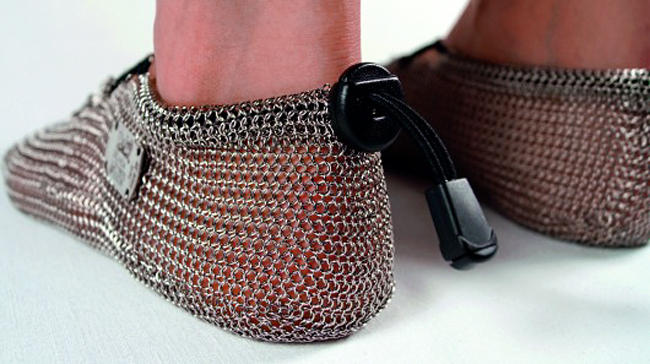When Americans express an interest in their fitness, their first step is usually buying something to make necessary exercise less strenuous and more convenient. Here are a few products that you may decide to purchase, but will never actually use.
1. Chainmail socks
Fitness technology has progressed so far that it has begun to regress. Using a patent originally filed in the middle ages, German company GoSt-Barefoots released its line of chainmail socks earlier this year. Since rubber-soled shoes deprive feet of tactile stimulation, the protective socks allow wearers to experience the temperature, moisture and humidity of the natural ground, minus the shooting pains caused by razor-sharp debris. But if having a cheese grater strapped to your foot doesn’t sound appealing, remember that stepping on a cactus would render the sock equally as useless. Not to mention that just one pair of the socks starts at around $260.
2. Underwater heart monitor
The market for underwater heart rate monitors may be small, but that hasn’t stopped Instabeat from creating the first device designed for and by swimmers. Capable of attaching itself to any pair of goggles, the Instabeat device rests against the temporal artery and flashes green, red and blue lights to denote various phases of fat-burning. Unfortunately for Instabeat, which is still trying to raise funds, demand has yet to make this product a reality.
3. Headgear heart monitor
Health monitors and pedometers are now so small that they can be worn on virtually any part of the body. From the chest to the heel, electronic devices can be conveniently placed and concealed so they don’t intrude on a person’s workout. But not Spree. Assuming that users have an insatiable desire for attention and friends who aren’t critical, the Spree device throws subtlety out the door. The cynosure wraps around the head, measuring heart rate, body temperature and other minor data that could be collected literally anywhere else on the human figure.
4. iPhone app for meditation
When trying to escape the fast-paced, technological world that surrounds us each and every day, it’s always best to invite that world right back into our lives. And now, with the Inner Balance app for iPhones and iPads, this is made possible. Using a sensor that clips to the earlobe, Inner Balance helps people who struggle to relax measure their emotional state. Once the heart rate slows to the correct level, users are rewarded with chimes and visual indicators. Soon, iPhone apps will teach us how to sleep.
5. A Wi-Fi-connected scale
The Aria smart scale is a nifty gadget for measuring a person’s body weight, body mass index and percent fat, but dropping $130 on a scale may not be worth it. Since the device relies on electrical signals to measure body fat, it’s not as accurate as other technology. The scale also requires users to consistently weigh themselves in order to view long-term weight patterns. While manually entering data points about your weight is a huge pain, Aria makes this process only slightly more convenient.
6. Fork to tell you to stop eating
When self-control just isn’t good enough, eating habits should be monitored by a fork. At last, America’s obesity epidemic has a worthy adversary: the HAPIfork. In order to prevent eaters from shoveling their faces with food too quickly, the HAPIfork vibrates and lights up to advise them to slow down. By taking more time to eat, the fork promotes better weight control, healthier digestion and smaller portions. Since nutrition is a key aspect of fitness, the HAPIfork acts like a pedometer for food by measuring the number of total “fork servings” and collecting information over a period of time to assess an eater’s diet.
Related Headlines















